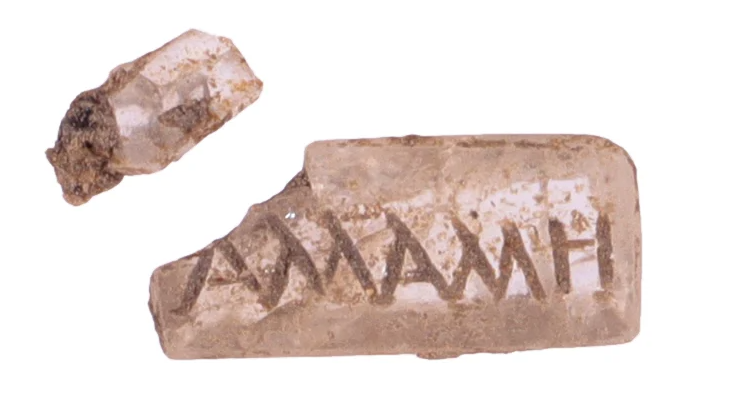Archaeologists in France have discovered a Roman-period cremation tomb richly furnished with silver coins, gold jewelry, and a ring inscribed with what is likely the last name of the deceased.
The grave was found unexpectedly during excavations at a medieval settlement in Lamonzie-Saint-Martin, a small town in southwestern France. As the archaeologists excavated underneath the medieval silos, they noticed an unusual burial, according to a Nov. 24 translated statement from the French National Institute for Preventive Archaeological Research (INRAP).
In one corner of the burial, archaeologists found a ceramic beaker and a clear glass vial. In another cluster of offerings, archaeologists recovered 10 silver and bronze coins, alongside small gold sheets that may have decorated a purse or case that held the coins. A series of lozenge-shaped crystals was also discovered, likely the remains of a bejeweled leather accessory that has since decomposed, as well as a long, corroded iron object that may have been part of a horse bit, which would have attached to a bridle.
The burial style, pottery and coins suggest that the bustum dates to sometime between the first and third centuries.
Also recovered from the burial were nearly two dozen gold objects, two of which may hold clues to the occupant of the grave.

Archaeologists unearthed a probable “bulla” — a special amulet that was given to male children in ancient Rome nine days after they were born and that they wore until they came of age as Roman citizens at around 16 years old. And the remains of a gold ring, deformed by the heat of the cremation, appear to match up with a small piece of inscribed rock crystal called an intaglio. The Greek inscription on the intaglio reads ΑΛΛΑΛΛΗ (Allallé), which may be the surname of the deceased.
The rich and well-preserved cremation tomb has raised a number of questions that archaeologists will try to answer through further analysis. They will study the surviving human bones to try to determine the deceased’s sex and age at death. They will also excavate in the area to look for other graves or dwellings that could help them understand why this tomb full of artifacts, including one that suggests Greek heritage, was placed in this part of France.


